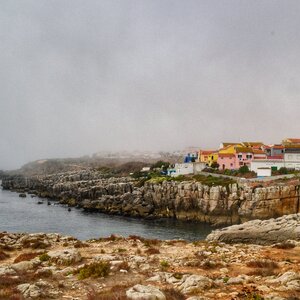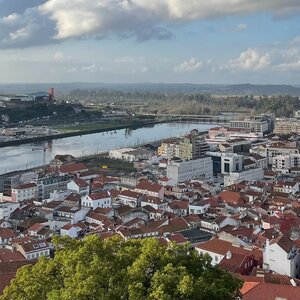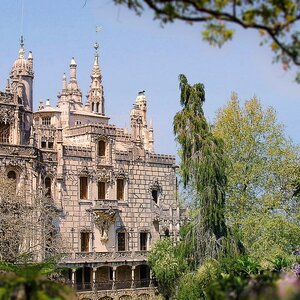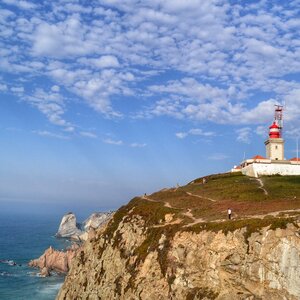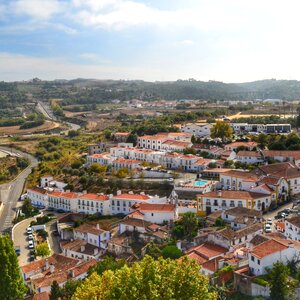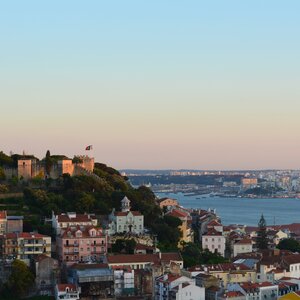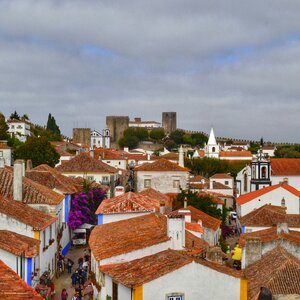Porto is located north of the Douro River. Officially, it is divided into 7 «parishes» (freguesias), which unite 15 districts.
Historical Center
The historic center of Porto is located in a parish of 6 districts — Cedofeita, Santo Ildefonso, Sé, Miragaia, São Nicolau and Vitória (Cedofeita, Santo Ildefonso, Sé, Miragaia, São Nicolau e Vitória). In accommodation search services you will also find the name Baixa, which translates as «low».
There’s a big elevation difference between the waterfront and northern neighborhoods. To avoid climbing up or down for every occasion, it’s important to choose your accommodation strategically and consider your plans — sightseeing, nightlife and transportation.

Plus, more affordable options are usually within a 20—25 minute walk from the river. A good example is Hotel Cristal Porto, with modern interiors, a garden and varied breakfasts. And Rs Porto Apartments offers spacious apartments with furnished kitchens. Among hostels, the Garden House Hostel is worth mentioning for its value for money.
Prices for different accommodation options (per night):
- Hotels 4* — from 87 €
- Apartments — from 67 €
- Hostels — from 16 €
The point where the center begins is the Ribeira promenade in the São Nicolau district. It is a UNESCO World Heritage Site and one of the main attractions of Porto.

São Nicolau is a small neighborhood. Besides the waterfront, it is home to the neoclassical palace of the Stock Exchange (Palácio da Bolsa), the Gothic church of St. Francis (Igreja de São Francisco) and the city museum Casa do Infante (Prince’s House). The rest of the sights are a bit of an uphill climb.
The Sé district is attractive with its authentic narrow streets and medieval style. This is where Porto began. It is also home to one of the city’s oldest buildings, the 12th-century Sé Catedral do Porto. It’s worth settling in Sé to feel the soul of the city, walk a lot and dine in traditional restaurants. But you can’t live here with a car.

In contrast to the monumental Se, the neighboring Vitória district is bustling with life. The main building of the University of Porto (Universidade do Porto) is located here, so the streets are almost always full of students. In the evening (especially at weekends), they move on to the bars, clubs and cafes that abound. For a quiet family trip, this neighborhood is not suitable. For nightlife, it’s perfect.
But even if you’re not staying in Vitoria, it’s worth a visit. If only for the baroque Torre dos Clérigos tower and the Art Nouveau bookshop Lello, which is said to be the inspiration for J. K. Rowling.
Miragaia is also known for its bars and cafes, but it is quieter. Like Se, Miragaia is not suitable for traveling by car because of its narrow streets and elevation differences. This small neighborhood was built during the Age of Discovery. Romance is conveyed by the colorful alleyways, the World of Discoveries museum and the Igreja de São Pedro church. It is also home to the Soares dos Reis Museum, Porto’s most famous.
Cedofeita is considered an art district. Dozens of galleries and designer stores are concentrated on Rua de Miguel Bombarda. And in the north of the neighborhood is the famous asymmetrical philharmonic, the Casa da Música (House of Music). The buildings in Sedofeita are more modern and the streets are wider. The main plus is that there are fewer crowds and noise than at the waterfront, but the main attractions are still close by.

In Santo Ildefonso, brand-name boutiques coexist with old bookstores. It is home to the city’s main shopping street, Rua Santa Catarina, as well as the famous Mercado do Bolhão (Bolhão Market). It is a very lively neighborhood during the day, but comfortable at night.
Bonfim.
To the east of the center is the Bonfim district. It used to be an industrial area, but now most of the factories are no longer in operation. In Bonfim, the center meets the outskirts, commercial buildings meet residential buildings. The people living here are mostly locals.
Bonfim is a great option for travelers with a car and families. In the former case, parking headaches can be avoided, and in the latter case, noise can be avoided.

The four-star Eurostars Heroismo offers a pleasant atmosphere and service, while Aparthotel Oporto Anselmo offers modern apartments with a kitchen. Parking is available at both, and public transportation is plentiful. Canvas Atelier Hostel has no parking, but it is more affordable and closer to the center.
Prices for different accommodation options (per night):
- Hotels 4* — from 68 €
- Apartments — from 54 €
- Hostels — from 25 €
Massarelos
Another residential area next door to the center is Massarelos. There are several buildings of the University of Porto here, so you’ll find many students among the locals. There are few sights and cafes in Massarelos, but there are no crowds or noise.
The southern part of the district is architecturally similar to the center. But in the north, closer to Avenida da Boavista, the buildings and streets become more modern. So if you are traveling with a car, I suggest staying as close to Boavista as possible.
If you choose the south, try to choose accommodation before the Arrábida Bridge (Ponte da Arrábida): the unfavorable neighborhoods of Bairro Aleixo begin to the west.
Of the hotels in Massarelouche, I can recommend the four-star Neya Porto Hotel. It is located right on the banks of the Douro and practically borders the center. In the north of the area there are modern and comfortable apartments RS Porto Boavista Studios and hostel with a cozy courtyard By Doors Hostel.
Prices for different accommodation options (per night):
- Hotels 4* — from 86 €
- Apartments — from 112 €
- Hostels — from 30 €
Foz do Douro (Foz do Douro)
«Foz» (foz) translates as «mouth»: this is where the Douro River and the Atlantic Ocean meet. This area is for you if you are planning a beach vacation. Clean and free beaches, ocean views, peace and tranquility — all this is about Foz do Douro.

The neighborhood is considered prestigious, so housing prices are above average. In addition, Foz do Douro is far from the center: if you travel without a car, you will have to pay for transportation.
But parks and beaches are within walking distance, as with the Casa das Laranjas Hotel or the Vila na Praia Foz Luxury Apartments. The latter open directly onto the Douro promenade, along which you can stroll to the ocean. There are few hostels in Foz do Douro, but HI Porto — Pousada de Juventude offers affordable accommodations.
Prices for different accommodation options (per night):
- Hotels 4* — from 135 €
- Apartments — from 183 €
- Hostels — from 20 €
Where to stay?
- The center has the most accommodation, attractions and restaurants. For short trips (1—3 days) it is the best option.
- Of the central neighborhoods, Sedofeita attracts with art, Santo Ildefonso with shopping, Vitoria with nightlife, and Se, Miragaya and San Nicolau with architecture.
- For traveling with family or by car, the residential areas adjacent to the center (Bonfim, Massarelos) and the «rich» coastal Foz do Douro are better suited.
- The most cost-effective way to rent is in apartments. But in the very center of the houses can be very old, so it is worth considering hotels. In the reviews, pay attention to humidity: it is a big problem in Porto.


